Key Takeaways
- Traditional hiring methods are insufficient to meet the rising demand for AI professionals in a competitive global market.
- Innovative strategies like skill-based hiring, remote recruitment, and partnerships with platforms like 9cv9 are essential.
- Retaining AI talent requires a strong focus on career growth, continuous learning, and purpose-driven work environments.
As artificial intelligence continues to transform industries across the globe, the demand for top-tier AI talent has surged to unprecedented levels. From generative AI and natural language processing to machine learning, robotics, and autonomous systems, organizations are racing to embed advanced AI capabilities into their core operations. However, this rapid acceleration has created a critical bottleneck: a growing shortage of skilled AI professionals. In 2025, this talent gap is no longer just a hiring issue — it has become a fundamental barrier to innovation, scalability, and long-term competitiveness.

According to recent workforce studies, the global demand for AI experts far outpaces the available supply. Companies across industries — including tech, healthcare, finance, automotive, retail, and energy — are struggling to recruit AI engineers, machine learning specialists, data scientists, and AI product managers who can bring their digital visions to life. Compounding the problem is the intense competition among enterprises, startups, and even public sector organizations, all vying for the same limited pool of talent. This shortage not only inflates salary expectations and prolongs recruitment cycles but also delays AI adoption, limits experimentation, and slows time-to-market for intelligent products and services.
Traditional hiring approaches are no longer effective in this landscape. Simply posting job openings or filtering candidates based on degrees or years of experience falls short of identifying individuals who possess the hands-on expertise, innovative thinking, and problem-solving skills required for cutting-edge AI roles. Moreover, many organizations are missing out on untapped talent pools, such as self-taught AI practitioners, international freelancers, or candidates from interdisciplinary backgrounds who bring unique value to AI teams.
In this comprehensive guide, we delve into the core drivers behind the AI talent shortage and explore innovative, actionable strategies that forward-thinking companies are using to bridge the gap. From revamping job descriptions and leveraging AI-powered recruitment tools to building strong employer branding, forming academic partnerships, and investing in internal upskilling programs, this article provides a roadmap for organizations looking to attract and retain world-class AI experts in 2025 and beyond.
Whether you’re a startup building your first AI product, a Fortune 500 company scaling enterprise-level machine learning infrastructure, or a government agency launching public AI initiatives, solving the AI talent shortage is not just a priority — it’s a strategic imperative. Read on to discover how your organization can rethink recruitment, unlock hidden talent, and build a future-ready AI workforce that drives innovation, growth, and resilience in the age of artificial intelligence.
Before we venture further into this article, we would like to share who we are and what we do.
About 9cv9
9cv9 is a business tech startup based in Singapore and Asia, with a strong presence all over the world.
With over nine years of startup and business experience, and being highly involved in connecting with thousands of companies and startups, the 9cv9 team has listed some important learning points in this overview of the Innovative Strategies for Hiring AI Experts.
If your company needs recruitment and headhunting services to hire top-quality employees, you can use 9cv9 headhunting and recruitment services to hire top talents and candidates. Find out more here, or send over an email to [email protected].
Or just post 1 free job posting here at 9cv9 Hiring Portal in under 10 minutes.
Solving the AI Talent Shortage: Innovative Strategies for Hiring AI Experts
- Understanding the AI Talent Shortage
- Impact of the AI Talent Gap on Businesses
- Traditional Hiring Practices Are No Longer Enough
- Innovative Strategies to Hire AI Experts
- Retaining AI Experts in a Competitive Market
- The Future of AI Talent: What to Expect in the Next 5 Years
1. Understanding the AI Talent Shortage
The shortage of artificial intelligence (AI) talent is one of the most pressing challenges facing the global economy in 2025. To effectively address this issue, businesses must first understand the underlying factors contributing to the shortage, how it manifests across industries, and what data reveals about its severity.
The Scope of the AI Talent Shortage
- AI talent includes roles such as:
- AI/ML Engineers
- Data Scientists
- Deep Learning Specialists
- NLP Engineers
- AI Product Managers
- Robotics Engineers
- Computer Vision Experts
- Industries most affected:
- Technology & SaaS (e.g., Google, OpenAI, NVIDIA)
- Healthcare (e.g., diagnostics, predictive analytics)
- Finance & Banking (e.g., fraud detection, algorithmic trading)
- Retail & E-commerce (e.g., recommendation engines)
- Automotive (e.g., autonomous driving)
- Global imbalance:
- AI talent is concentrated in North America, Western Europe, and parts of Asia, leaving many regions underserved.
Key Causes Behind the AI Talent Shortage
- Education system lagging behind AI advancements
- University programs are not evolving fast enough to meet real-world demands.
- AI graduates often lack hands-on, production-level experience.
- Explosion in demand across industries
- AI adoption is accelerating beyond tech—into logistics, agriculture, energy, and legal services.
- According to LinkedIn, AI-related job postings increased by 38% globally from 2023 to 2025.
- Highly competitive hiring environment
- Top talent is absorbed by tech giants and elite research labs.
- Startups and SMEs struggle to offer comparable compensation or growth opportunities.
- Limited diversity and inclusion in AI pipelines
- Women, minorities, and underrepresented regions remain marginalized in AI talent development.
- Diversity gaps lead to a narrower pool of perspectives and problem-solving approaches.
AI Roles in Highest Demand (2025)
| Role | Global Openings (Est.) | Top Industries Hiring |
|---|---|---|
| Machine Learning Engineer | 210,000+ | Tech, Finance, Healthcare |
| AI Research Scientist | 125,000+ | Academia, Tech, Autonomous Systems |
| Data Scientist | 180,000+ | E-commerce, SaaS, Finance |
| Computer Vision Engineer | 90,000+ | Automotive, Security, Drones |
| NLP Engineer | 85,000+ | Chatbots, Healthcare, Legal AI |
| AI Product Manager | 70,000+ | SaaS, Fintech, Enterprise Software |
Global Talent Supply vs. Demand
- Projected AI Talent Gap (2025–2030):
- Over 1 million unfilled AI roles globally by 2030 (World Economic Forum)
- Talent bottlenecks expected to grow unless reskilling initiatives scale rapidly
Chart: Global AI Talent Supply vs. Demand (2020–2025)
Year | AI Jobs Available | AI Professionals | Talent Gap
------------------------------------------------------------
2020 | 350,000 | 250,000 | 100,000
2022 | 620,000 | 420,000 | 200,000
2023 | 800,000 | 550,000 | 250,000
2024 | 950,000 | 600,000 | 350,000
2025* | 1,100,000+ | 680,000 | 420,000+
*Projections based on industry hiring data and AI education output.
Regional Disparities in AI Talent Development
| Region | AI Talent Output | Key Challenges |
|---|---|---|
| North America | High | Saturated market, brain drain from academia to industry |
| Western Europe | Medium–High | Language fragmentation, slower private sector adoption |
| East Asia | Very High (China, Japan, S. Korea) | Tight government regulation, IP retention issues |
| Southeast Asia | Low–Medium | Emerging tech ecosystem, lack of AI-specialized programs |
| Latin America | Low | Education and infrastructure gaps |
| MENA | Low | Political instability, limited R&D investment |
Real-World Example: AI Hiring Bottlenecks
- Example: Autonomous Vehicle Industry
- Companies like Waymo, Tesla, and Cruise are experiencing delays in deployment due to talent shortages in areas such as:
- Real-time perception and sensor fusion
- Reinforcement learning for autonomous decision-making
- Result: Product development delays and slowed regulatory approval.
- Companies like Waymo, Tesla, and Cruise are experiencing delays in deployment due to talent shortages in areas such as:
- Example: Healthcare AI Startups
- AI startups developing diagnostic models struggle to hire qualified AI/ML engineers with experience in medical imaging and FDA compliance.
- High barriers to entry due to dual-domain expertise requirements.
Why the Talent Shortage is More Than a Hiring Issue
- Innovation risk: Projects are delayed or shelved due to lack of expertise.
- Quality issues: Inexperienced hires can result in flawed AI models, biased outputs, or non-scalable architectures.
- Competitive disadvantage: Organizations unable to hire fast risk being overtaken by AI-first competitors.
Conclusion: A Complex, Multi-Layered Problem
Understanding the AI talent shortage requires recognizing its:
- Global scope
- Interdisciplinary challenges
- Structural barriers in education, policy, and workforce development
Solving it requires strategic innovation in hiring, training, and partnerships, which we’ll explore in the next section.
2. Impact of the AI Talent Gap on Businesses
The AI talent shortage is not just a hiring problem—it poses critical threats to growth, competitiveness, innovation, and long-term sustainability. Organizations across sectors are facing costly setbacks due to their inability to recruit and retain top-tier AI professionals. The effects are both immediate and long-term, affecting everything from daily operations to future-proofing strategies.
Delays in AI Product Development and Deployment
- Extended time-to-market for AI solutions
- Without the necessary AI experts, organizations struggle to translate prototypes into production.
- Lack of specialized roles (e.g., MLOps engineers, data engineers) disrupts full deployment cycles.
- R&D bottlenecks
- Research initiatives in deep learning, reinforcement learning, and generative AI are stalled.
- Innovation teams are unable to scale proofs-of-concept due to insufficient AI capacity.
- Real-world example
- A fintech company aiming to launch a fraud detection AI tool had to delay the project by 9 months due to its inability to hire experienced machine learning engineers.
Increased Operating Costs and Inefficient Resource Allocation
- Higher recruitment costs
- Organizations spend more on headhunting, recruitment marketing, and signing bonuses to attract limited talent.
- Use of external AI consultants or contractors inflates budgets.
- Over-reliance on generalist engineers
- Companies assign AI projects to general software engineers who lack specialized AI/ML knowledge, leading to suboptimal results.
- Quality of models, scalability, and robustness are compromised.
- Real-world example
- According to Deloitte, companies hiring AI freelancers on a short-term basis reported 30–45% higher per-project costs compared to projects handled by in-house teams.
Missed Business Opportunities and Competitive Disadvantage
- Inability to launch AI-driven offerings
- Without AI talent, businesses fail to capitalize on automation, personalization, or analytics-driven products.
- Lost market share to competitors who deploy faster and more effectively.
- Erosion of customer experience
- Delays in AI implementation for chatbots, recommendation engines, or personalization reduce customer satisfaction and retention.
- Industry-specific impact
- Retail: Poor AI-driven inventory management or recommendation systems lead to lost revenue.
- Healthcare: Delays in predictive diagnostics limit patient care optimization.
- Logistics: Lack of AI for route optimization raises fuel costs and delivery times.
Compromised Model Accuracy, Ethics, and Security
- Poorly developed models introduce risk
- Insufficient expertise results in AI models that are biased, non-transparent, or not legally compliant.
- Errors in AI logic can lead to financial losses, legal implications, or customer harm.
- Security vulnerabilities
- Inadequate AI security skills lead to unsafe deployment of models vulnerable to adversarial attacks.
- Real-world example
- A healthcare firm’s AI model misclassified 12% of patient records due to improper training data preprocessing—a mistake caused by lack of experienced AI talent.
Slower Digital Transformation and Innovation
- AI becomes a bottleneck in broader transformation efforts
- AI underpins digital transformation in cloud computing, IoT, automation, and customer analytics.
- Without AI talent, transformation strategies stall or fail altogether.
- Innovation stagnation
- Lack of skilled AI talent prevents companies from exploring advanced use cases like:
- Federated learning
- Autonomous systems
- Multi-modal AI
- Lack of skilled AI talent prevents companies from exploring advanced use cases like:
- Case in point
- A global logistics company postponed integrating AI with IoT-enabled supply chains due to a 14-month gap in hiring senior AI architects.
AI Talent Shortage Impact by Company Size
| Company Size | Impact Severity | Common Challenges |
|---|---|---|
| Startups | Very High | Unable to compete on salary or benefits; struggle to attract top talent |
| Mid-sized Companies | High | Limited internal training programs; project delays |
| Large Enterprises | Medium–High | Expensive retention efforts; difficulty scaling AI teams |
| Government Agencies | High | Bureaucratic hiring slows down onboarding of in-demand roles |
Regional Disparities in Business Impact
| Region | Talent Shortage Severity | Business Impact |
|---|---|---|
| North America | High | Increased competition among FAANG and startups |
| Europe | Medium–High | Fragmented hiring regulations, growing demand from public sector |
| Asia-Pacific | High | Rising AI investment but insufficient senior-level talent |
| Latin America | Medium | AI adoption slow due to educational and funding gaps |
| Africa | Medium–Low | Early-stage AI development, few educational pathways |
Visual: Business Risks Amplified by AI Talent Shortage
+---------------------------------------------------------------+
| AI Talent Shortage Impacts |
+-------------------+----------------+--------------------------+
| Strategic Risk | Operational Risk | Financial Risk |
+-------------------+----------------+--------------------------+
| - Missed revenue | - Deployment | - Higher hiring costs |
| opportunities | bottlenecks | - Outsourcing expenses |
| - Slower product | - Quality & bias | - Opportunity costs |
| innovation | issues | |
+-------------------+----------------+--------------------------+
Conclusion: The High Cost of Inaction
- The AI talent shortage is not a temporary challenge; it is a systemic issue affecting innovation pipelines, competitive differentiation, and digital maturity.
- Companies must recognize that solving the talent gap is a business-critical initiative, not just a staffing concern.
- As industries digitize faster than talent can be produced, those who adapt their hiring and workforce strategies now will lead the AI-powered future.
3. Traditional Hiring Practices Are No Longer Enough
As the global demand for artificial intelligence (AI) professionals intensifies, companies relying on conventional hiring strategies are finding themselves at a severe disadvantage. Traditional recruitment methods—built for general roles—fail to meet the complexity, speed, and competitiveness of AI hiring. In today’s high-stakes talent landscape, organizations must recognize the limitations of outdated practices and pivot toward modern, agile, and AI-specific recruitment frameworks.
Why Traditional Hiring Methods Fail in AI Recruitment
- Overreliance on Degrees and Certifications
- AI success often depends more on real-world experience, research contributions, and open-source projects than formal academic degrees.
- Many top AI practitioners are self-taught or come from non-traditional backgrounds.
- Job Descriptions Too Generic or Outdated
- Vague job postings fail to attract the right candidates.
- Titles like “Data Scientist” or “AI Developer” lack clarity and fail to reflect the nuances of roles (e.g., NLP Engineer vs. Computer Vision Engineer).
- Inadequate Technical Assessment Methods
- Standard interviews and coding tests often fail to measure skills in machine learning, model interpretability, data preprocessing, and AI ethics.
- Lack of domain-specific challenges leads to false positives or missed talent.
- Lengthy and Rigid Recruitment Processes
- AI professionals are in high demand and will not wait through prolonged hiring cycles.
- Companies that fail to make fast, decisive offers lose top candidates to more agile competitors.
- Limited Outreach and Passive Hiring
- Posting on job boards and waiting for applicants is ineffective.
- AI experts are rarely “actively” looking—they are often recruited via targeted sourcing or referrals.
Real-World Examples of Traditional Methods Falling Short
- Example 1: A Fortune 500 company
- Spent over 6 months trying to fill a “Senior AI Engineer” role through conventional job portals and HR-led interviews.
- Despite over 200 applicants, none passed the production-ready ML coding challenge.
- Eventually filled the role via a Kaggle Grandmaster found through GitHub outreach.
- Example 2: A healthcare AI startup
- Used a generic job description that emphasized JavaScript and web development.
- Missed attracting candidates skilled in PyTorch and medical imaging.
- Had to relaunch the search with a redefined role, costing the company 3 months of development time.
Table: Comparison – Traditional vs. Modern AI Hiring Practices
| Hiring Element | Traditional Approach | Modern, AI-Specific Approach |
|---|---|---|
| Job Description | Vague and general | Skills-focused, project-driven |
| Talent Discovery | Job boards, internal referrals | GitHub, Kaggle, AI forums, hackathons |
| Candidate Screening | Resume filtering, HR phone screens | Portfolio reviews, Git-based contributions |
| Skills Evaluation | Generic coding tests | AI model-building tasks, real-world case studies |
| Interview Structure | Linear, multi-week rounds | Agile loops, technical deep-dives with domain experts |
| Time-to-Hire | 45–90 days | 14–30 days with fast-tracked pipelines |
| Key Focus | Educational credentials | Proven AI output, experimentation, deployment readiness |
Common Pitfalls in Legacy Hiring Models for AI Roles
- Misaligned Stakeholders
- HR teams often lack the technical depth to evaluate AI talent, while hiring managers fail to communicate clear requirements.
- One-Size-Fits-All Screening
- Using generic aptitude tests or LeetCode-style problems overlooks AI-specific abilities such as:
- Feature engineering
- Model explainability
- Reinforcement learning
- Using generic aptitude tests or LeetCode-style problems overlooks AI-specific abilities such as:
- Failing to Engage Passive Talent
- Top AI engineers are often not applying—they need to be recruited through GitHub outreach, technical blogs, or AI community contributions.
Visual Chart: Traditional Hiring Bottlenecks for AI Talent
+------------------------------+-------------------------+
| Hiring Stage | Common Bottleneck |
+------------------------------+-------------------------+
| Job Posting | Too vague or misaligned |
| Resume Screening | Misses non-traditional |
| Technical Interview | Not domain-specific |
| Offer Process | Too slow or non-competitive |
+------------------------------+-------------------------+
Industries Struggling with Outdated AI Hiring Models
| Industry | Talent Needs | Why Traditional Hiring Fails |
|---|---|---|
| Healthcare | AI for diagnostics, imaging, predictions | Requires dual-domain expertise, which resumes alone can’t assess |
| Fintech | Fraud detection, risk modeling, ML pipelines | Lacks fast, agile hiring structures to compete with startups |
| E-commerce | Recommendation systems, personalization | Often undervalues open-source contributions or Kaggle profiles |
| Government/Public | NLP, AI for citizen services | Bureaucratic hiring models too slow and inflexible |
The Evolution of AI Talent Discovery
| Source | Effectiveness (2025) | Description |
|---|---|---|
| Traditional Job Boards | Low | High noise, low specialization |
| Medium | Useful but saturated; limited for niche AI roles | |
| GitHub & GitLab | High | Insight into actual code and project contributions |
| Kaggle & AI Challenges | Very High | Real-world AI competitions that demonstrate talent |
| AI Meetups & Hackathons | High | Great for assessing teamwork, innovation, and creativity |
Conclusion: Adapt or Fall Behind
- Traditional hiring frameworks were built for predictable, scalable roles—not for the fast-evolving, high-skill, and research-intensive field of AI.
- Organizations that continue relying solely on resumes, job portals, and long interview cycles will fall behind in the race for AI innovation.
- To hire AI experts effectively, companies must:
- Redesign job postings
- Leverage technical communities
- Implement AI-specific assessments
- Accelerate decision-making processes
In the next section, we’ll explore how to do exactly that—by embracing innovative strategies for hiring AI experts in 2025 and beyond.
4. Innovative Strategies to Hire AI Experts
To stay competitive in the AI-driven economy, businesses must move beyond outdated hiring methods and adopt innovative, data-backed strategies tailored specifically for AI recruitment. As the global talent shortage intensifies, traditional pipelines are no longer sufficient. Forward-thinking companies are embracing new channels, tools, partnerships, and talent engagement techniques to attract and retain world-class AI professionals. This section breaks down the most effective, scalable, and modern strategies businesses can implement in 2025 to close the AI hiring gap.
1. Redefining AI Job Descriptions and Role Expectations
- Use skill-focused language
- Focus on core technical competencies: Python, TensorFlow, PyTorch, MLOps, NLP, computer vision, etc.
- Highlight specific project goals (e.g., “Develop deep learning algorithms for autonomous driving” rather than “AI Engineer”).
- Clarify responsibilities by AI specialization
- Differentiate roles such as:
- Machine Learning Engineer vs. AI Researcher
- NLP Specialist vs. Computer Vision Engineer
- AI Product Manager vs. Data Scientist
- Differentiate roles such as:
- Remove unnecessary degree requirements
- Prioritize experience, open-source contributions, Kaggle rankings, and practical work over formal education.
- Real-world example
- A robotics firm increased applications by 300% after rewording their job ad from “AI Developer with PhD” to “Computer Vision Engineer with OpenCV + PyTorch experience.”
2. Leverage Specialized AI Job Platforms and Recruitment Agencies
- Partner with niche job platforms like 9cv9
- 9cv9 is a leading recruitment agency and job portal in Asia that specializes in matching tech and AI talent with top employers.
- Their platform supports targeted job distribution, AI skills filtering, and access to a pre-vetted database of machine learning engineers, data scientists, and AI researchers.
- Benefits of using 9cv9 for AI hiring
- Access to emerging and remote talent from Southeast Asia, a fast-growing tech talent pool.
- Faster time-to-hire through automated job matching and candidate screening.
- Multi-language job listings to attract regional AI candidates.
- Use AI-focused hiring services
- Agencies like 9cv9 offer tailored solutions for AI hiring, including technical interview outsourcing, candidate assessment, and headhunting services for rare roles.
3. Tap into Non-Traditional and Global Talent Pools
- Explore self-taught AI practitioners
- Many high-performing AI experts are graduates of platforms like Coursera, Udacity, and fast.ai.
- GitHub, Medium articles, and Kaggle profiles often provide better indicators of capability than resumes.
- Hire remotely to access global talent
- Tap into AI hubs beyond Silicon Valley, such as:
- Bengaluru (India)
- Tel Aviv (Israel)
- Ho Chi Minh City (Vietnam)
- Warsaw (Poland)
- Tap into AI hubs beyond Silicon Valley, such as:
- Work with remote-first recruitment platforms
- Combine global sourcing with compliance support for international hires.
- 9cv9’s regional reach across Asia makes it a strong partner for identifying bilingual AI professionals and bridging the East-West talent divide.
4. Use AI-Powered Tools to Hire AI Talent
- Adopt AI recruitment platforms
- Use software that leverages machine learning to:
- Shortlist top candidates
- Automate skill matching
- Detect portfolio quality based on GitHub contributions
- Use software that leverages machine learning to:
- Implement candidate analytics
- Use metrics like:
- Code quality score
- Peer-reviewed project performance
- Interview simulation results
- Use metrics like:
- Real-world example
- A fintech startup reduced their screening time by 60% using AI hiring tools that integrated with GitHub and Stack Overflow.
5. Build Academic and Research Partnerships
- Collaborate with universities and AI labs
- Establish internship pipelines and co-op programs with top AI institutions.
- Sponsor thesis projects and AI competitions to identify early talent.
- Create fellowship or residency programs
- Attract PhD students and researchers with sponsored research and publication opportunities.
- Examples of academic collaborators
- MIT-IBM Watson AI Lab
- Stanford AI Lab (SAIL)
- NUS AI Lab (Singapore)
- 9cv9 can facilitate partnerships
- As a regional recruitment specialist, 9cv9 can connect businesses to AI educational institutions in Vietnam, Indonesia, Malaysia, and Thailand.
6. Upskill and Reskill Existing Talent
- Launch internal AI training programs
- Use platforms like Coursera, DataCamp, and Udacity to train internal staff in:
- Neural networks
- Model deployment
- AI ethics and compliance
- Use platforms like Coursera, DataCamp, and Udacity to train internal staff in:
- Create AI career tracks within your organization
- Identify high-potential employees in software engineering or data analysis and offer them structured AI development paths.
- Build AI guilds or communities of practice
- Encourage peer-to-peer learning and open-source project collaboration internally.
7. Organize Hackathons, Competitions, and Community Events
- Host branded AI competitions
- Solve real-world problems while attracting participants with the relevant expertise.
- Engage with developer communities
- Sponsor or participate in events hosted on:
- Kaggle
- AIcrowd
- GitHub Copilot Labs
- Meetup.com (local AI/ML groups)
- Sponsor or participate in events hosted on:
- Create an AI employer brand
- Showcase thought leadership via blogs, open-source projects, and conference talks.
- Highlight internal AI projects to inspire job seekers.
8. Speed Up Hiring with Agile Recruitment Processes
- Shorten the recruitment funnel
- Reduce from 5+ interviews to 2–3 focused stages:
- Technical challenge
- Peer review
- Final culture/vision interview
- Reduce from 5+ interviews to 2–3 focused stages:
- Make competitive, fast offers
- AI talent receives multiple offers—delayed decisions = lost candidates.
- Use flexible contracts
- Offer contract-to-hire options or research fellowships before full-time hiring.
Chart: Effectiveness of AI Hiring Strategies (2025)
+------------------------------------------+----------------------+
| Hiring Strategy | Effectiveness Rating |
+------------------------------------------+----------------------+
| Traditional Job Portals | Low |
| Recruitment Agencies like 9cv9 | Very High |
| Remote Global Hiring | High |
| AI-Powered Hiring Tools | High |
| Internal Upskilling Programs | Medium–High |
| University & Research Collaborations | High |
| Hackathons and Competitions | High |
+------------------------------------------+----------------------+
Conclusion: Reinventing Recruitment to Win the AI Talent War
- Hiring AI experts in 2025 requires a radical departure from legacy methods.
- Businesses must embrace a multi-pronged approach—leveraging technology, global reach, community building, and specialized partners like 9cv9, which provides end-to-end AI recruitment solutions through its job portal and agency services.
- The winners in the AI talent race will be those who move fast, think creatively, and recruit inclusively—unlocking the full potential of artificial intelligence across industries.
5. Retaining AI Experts in a Competitive Market
Attracting AI talent is only half the battle—retaining them is the true test of a company’s leadership, culture, and long-term strategy. In a hyper-competitive market where AI professionals receive frequent job offers, high salaries alone are not enough. Top-tier AI talent values learning opportunities, meaningful impact, work-life balance, and access to cutting-edge tools. Retention strategies must be as innovative as recruitment approaches to avoid losing key contributors to startups, tech giants, or competitors offering better growth paths.
1. Provide Continuous Learning and Upskilling Opportunities
- Offer funded access to AI certifications
- Encourage employees to pursue credentials in:
- Deep Learning (Coursera, DeepLearning.ai)
- MLOps (Google Cloud, AWS)
- Advanced NLP (fast.ai, Hugging Face courses)
- Encourage employees to pursue credentials in:
- Implement structured learning paths
- Create internal AI academies or learning management systems (LMS) for:
- Model deployment
- Federated learning
- Responsible AI frameworks
- Create internal AI academies or learning management systems (LMS) for:
- Host internal tech talks and workshops
- Invite researchers and thought leaders from leading AI labs (e.g., OpenAI, DeepMind) to share insights.
- Real-world example
- A logistics firm retained 90% of its AI team over 2 years by launching an internal ML Mastery Program with quarterly certifications.
2. Create a Clear, Transparent Career Growth Framework
- Define career ladders for AI professionals
- Role-based tracks with levels such as:
- AI Engineer → Senior AI Engineer → AI Lead → Head of AI
- Research Scientist → Principal Scientist → Chief AI Officer
- Role-based tracks with levels such as:
- Align promotions with contributions to real-world impact
- Reward:
- Published research
- Open-source contributions
- Successful model deployments at scale
- Reward:
- Offer cross-functional growth opportunities
- Encourage transitions between AI, product management, and R&D.
3. Offer Meaningful, Purpose-Driven Work
- Connect AI projects with real-world impact
- Projects in climate tech, healthcare diagnostics, or social impact AI increase job satisfaction.
- Let AI experts own problems, not just models
- Empower them to make decisions on data sourcing, experimentation methods, and deployment strategies.
- Real-world example
- An AI startup retained its top NLP researcher by giving them full ownership of a multilingual chatbot product for underserved communities.
4. Build a Strong AI-First Work Culture
- Promote autonomy and experimentation
- Create space for:
- 10–20% “innovation time”
- AI hackathons
- Internal R&D labs
- Create space for:
- Encourage open-source contributions
- Allocate time for employees to contribute to:
- TensorFlow
- PyTorch
- Hugging Face repositories
- Allocate time for employees to contribute to:
- Foster psychological safety
- Encourage idea sharing without fear of judgment, especially in research-heavy environments.
5. Competitive Compensation with Equity and Perks
- Benchmark AI compensation packages regularly
- Ensure salaries remain competitive with updated 2025 market data.
- Include long-term incentives
- Stock options, profit-sharing, patent royalties, and research stipends.
- Offer flexible perks tailored to tech talent
- High-performance hardware
- Research budgets
- Conference travel reimbursements
6. Flexible Work Models and Work-Life Balance
- Enable remote or hybrid options
- Particularly for international AI researchers or developers in emerging markets.
- Offer 4-day workweeks or flexible hours
- Helps reduce burnout while maintaining productivity.
- Support mental health and downtime
- Provide wellness programs, AI-free meeting days, and no-interruption coding hours.
7. Recognition and Contribution Visibility
- Celebrate technical wins regularly
- Recognize breakthroughs in model performance, new patent filings, or successful launches.
- Support research publication and speaking engagements
- Sponsor employees to present at:
- NeurIPS
- ICML
- CVPR
- AI Expo Asia
- Sponsor employees to present at:
- Promote internal visibility
- Feature AI teams in company newsletters, investor briefings, or thought leadership blogs.
8. Cultivate Inclusion and Diversity in AI Teams
- Mentorship and sponsorship programs
- Support underrepresented groups in AI (e.g., women in ML, minority-led AI initiatives).
- Inclusive hiring and retention policies
- Diverse teams result in better model generalization and higher retention.
- Create Employee Resource Groups (ERGs)
- Focus on building a community around shared identity, research interests, or social causes.
9. Offer Innovation Sabbaticals and Research Freedom
- Launch sabbatical programs for AI experts
- Offer 3–6 month breaks to:
- Write whitepapers
- Conduct independent research
- Contribute to academic collaborations
- Offer 3–6 month breaks to:
- Allow publication of non-proprietary research
- Strengthens employer brand and satisfies researchers’ academic goals.
Table: Top Retention Strategies for AI Experts (Ranked by Effectiveness)
| Strategy | Effectiveness Rating (2025) | Implementation Complexity |
|---|---|---|
| Continuous Learning Programs | Very High | Medium |
| Clear Career Progression | Very High | Medium |
| Purpose-Driven Projects | High | Medium |
| Flexible Work Models | Very High | Low |
| Recognition and Visibility | High | Low |
| Research Freedom & Open Source Contribution | Medium–High | Medium |
| Competitive Compensation & Equity | High | High |
| Inclusion and Mentorship | High | Medium |
Chart: Why AI Talent Leaves (Survey-Based Insight)
Reasons for Leaving (2024–2025)
1. Lack of Career Growth ████████████████████ 78%
2. Uncompetitive Compensation █████████████████ 71%
3. Limited Research Opportunities █████████████ 59%
4. Burnout and Work-Life Balance ████████████ 51%
5. Lack of Innovation Culture ██████████ 42%
Source: AI Talent Trends Report 2025 (Global Tech Insights)
Real-World Case Study: How a Fintech Firm Retained its AI Team
- Company Profile: Fintech firm with a 15-person AI team
- Challenge: Losing engineers to Big Tech offers
- Solution:
- Introduced equity-based bonuses
- Created an internal AI research council
- Sponsored all team members to attend global AI conferences
- Result:
- Retention rate increased from 65% to 92% over 18 months
Conclusion: Retention is the New Recruitment
- In the AI economy, retention is not just an HR function—it’s a strategic differentiator.
- Organizations that invest in learning, culture, autonomy, and research freedom are more likely to:
- Retain elite AI professionals
- Boost productivity
- Establish a long-term competitive edge
- As AI talent continues to shape the future of every industry, retaining them must be a top C-suite priority in 2025 and beyond.
6. The Future of AI Talent: What to Expect in the Next 5 Years
The global AI talent landscape is evolving rapidly. With AI adoption projected to accelerate across every major sector, the next five years will witness profound changes in how AI professionals are trained, hired, and retained. New roles will emerge, educational models will shift, and global demand will continue to outstrip supply. Businesses that understand and prepare for these trends will gain a decisive edge in the AI-driven economy.
1. Continued Explosion in Global AI Talent Demand
- Exponential increase in AI use cases
- AI will become central to:
- Autonomous systems
- Generative content
- Predictive maintenance
- AI-driven customer experience
- New verticals adopting AI include:
- Legaltech
- Agritech
- Education (AI tutors, personalized learning)
- Government/public administration
- AI will become central to:
- Estimates and projections
- According to the World Economic Forum, by 2030, over 80 million AI-related jobs will be created worldwide.
- Gartner projects 70% of enterprises will adopt AI-first strategies by 2028, increasing pressure on the talent pipeline.
2. Shift Toward Interdisciplinary AI Roles
- Hybrid roles will dominate AI hiring
- Future AI professionals will need cross-functional expertise in:
- AI + Business Strategy (AI Product Manager)
- AI + Biology (Computational Biologist)
- AI + Law (AI Compliance Officer)
- AI + Climate Science (AI for Sustainability Analyst)
- Future AI professionals will need cross-functional expertise in:
- Rise of industry-specific AI applications
- Healthcare: AI Medical Imaging Engineer
- Finance: Explainable AI Model Auditor
- Retail: AI Personalization Architect
- Real-world example
- In 2025, a global insurer created a new role: “Responsible AI Governance Lead” to ensure fairness and compliance in underwriting algorithms.
3. Emergence of New AI Talent Hubs Worldwide
- Geographic diversification of AI talent
- Emerging hubs in the next five years:
- Ho Chi Minh City (Vietnam)
- Nairobi (Kenya)
- Guadalajara (Mexico)
- Tallinn (Estonia)
- Emerging hubs in the next five years:
- Governments investing in national AI strategies
- UAE, Singapore, India, and Indonesia are building AI education ecosystems and offering incentives for AI-focused startups.
- Role of job platforms like 9cv9
- Recruitment portals like 9cv9 will play a key role in connecting businesses with AI talent from underrepresented but high-growth regions across Southeast Asia and beyond.
4. Evolution of AI Education and Certification Pathways
- Traditional degrees will lose dominance
- Expect a massive shift toward:
- Micro-credentials
- Bootcamps (e.g., fast.ai, DeepLearning.ai)
- Stackable learning models (Coursera Specializations, edX MicroMasters)
- Expect a massive shift toward:
- Industry-led AI academies
- Big tech companies, consultancies, and even governments will launch their own academies to create proprietary talent pipelines.
- Increased focus on real-world projects
- GitHub portfolios, Kaggle rankings, and open-source contributions will carry more weight than GPA or diplomas.
- Chart: Expected Shift in AI Talent Credentialing (2025–2030)
+---------------------------+------------+-----------+-----------+
| Credential Type | 2025 (%) | 2027 (%) | 2030 (%) |
+---------------------------+------------+-----------+-----------+
| Traditional University | 48% | 35% | 25% |
| Bootcamp/Micro-Certified | 28% | 36% | 40% |
| Internal Corporate Academy| 14% | 18% | 25% |
| Open Source/Kaggle | 10% | 11% | 10% |
+---------------------------+------------+-----------+-----------+
5. AI-Enhanced Hiring and Talent Matching Will Become Standard
- AI will transform recruitment of AI talent
- AI tools will:
- Score candidates by project relevance
- Predict job performance based on coding behavior
- Match roles based on skills, not just titles
- AI tools will:
- Rise of predictive hiring platforms
- Tools will suggest “talent potential” based on training history, problem-solving style, and collaboration metrics.
- Example
- A European bank implemented an AI-powered assessment platform to shortlist AI engineers using live model evaluations instead of static resumes.
6. Greater Emphasis on Responsible, Ethical, and Explainable AI Skills
- AI ethics will become a core requirement
- Skills in:
- Bias mitigation
- Model transparency
- Fairness and accountability
- Compliance with global AI regulations like:
- EU AI Act
- Singapore Model AI Governance Framework
- OECD AI Principles
- Skills in:
- New certifications in Responsible AI
- Programs from:
- IEEE
- The Alan Turing Institute
- AI Ethics Lab
- Programs from:
- Increased corporate demand for ethical leadership
- Roles like:
- AI Ethics Officer
- Algorithm Fairness Consultant
- Bias Auditor
- Roles like:
7. Remote-First and Freelance AI Work Will Surge
- Remote AI roles will outnumber on-site roles by 2028
- 5G, cloud platforms, and distributed compute will enable:
- Global model collaboration
- Real-time experimentation
- Fully remote AI research teams
- 5G, cloud platforms, and distributed compute will enable:
- Growth of freelance AI marketplaces
- Platforms like:
- Toptal AI
- Upwork AI Projects
- 9cv9’s AI freelance talent pool
- Platforms like:
- Benefits for companies
- Cost-efficiency
- Faster time-to-hire
- Access to global niche expertise
8. AI Talent Retention Will Depend on Innovation and Impact
- Top professionals will seek organizations that offer:
- Autonomy in research
- Ownership of projects
- Access to high-quality data
- Job satisfaction will center around
- Purpose (AI for good, climate change, social impact)
- Learning (access to AI journals, conferences, tools)
- Contribution (publishing, open source, patents)
- Table: AI Talent Retention Drivers (2025–2030)
| Retention Factor | Importance Rating (1–5) |
|---|---|
| Career Growth Opportunities | 4.8 |
| Research & Innovation Freedom | 4.6 |
| Purpose-Driven Work | 4.5 |
| Flexible Work Environment | 4.4 |
| Competitive Compensation | 4.2 |
9. Widening AI Talent Inequality: Challenges Ahead
- AI talent will be unevenly distributed
- Companies in Tier-2 and Tier-3 cities may struggle to retain talent attracted to tech hubs.
- SMEs and startups may face pricing out due to salary inflation.
- Talent migration and brain drain
- Regions without AI infrastructure may lose top talent to global employers.
- Policy-driven talent localization
- Countries may enforce visa restrictions or “AI for nation-first” strategies.
10. Strategic Role of Platforms like 9cv9 in the AI Talent Ecosystem
- AI-focused recruitment and job matching
- 9cv9 will help bridge the gap between global employers and regional AI professionals in:
- Vietnam
- Thailand
- Indonesia
- Philippines
- 9cv9 will help bridge the gap between global employers and regional AI professionals in:
- AI job portal innovations
- Integration of AI-driven screening
- Smart candidate recommendation engines
- Language-localized job listings
- Supporting future hiring trends
- Helping startups, governments, and enterprises access AI engineers with industry-specific skills through curated talent pipelines.
Conclusion: Preparing for the AI Talent Future
- The AI workforce in 2030 will be:
- More global
- More interdisciplinary
- More mission-driven
- Less credential-focused
- Companies that adapt to these shifts—by updating hiring strategies, investing in learning, and collaborating with platforms like 9cv9—will lead the AI economy.
- As AI becomes foundational to every business function, investing in future-ready AI talent strategies today will determine tomorrow’s success.
Conclusion
The AI talent shortage is one of the most pressing workforce challenges of the modern digital era. As organizations worldwide accelerate their adoption of artificial intelligence technologies, the demand for skilled AI professionals is rapidly outpacing supply. From machine learning engineers and NLP specialists to AI product managers and research scientists, the gap between industry needs and available talent continues to widen—threatening innovation, competitiveness, and long-term growth.
Throughout this guide, we have explored the depth of the issue and provided actionable strategies to help businesses not only navigate but overcome the AI talent crisis. Traditional recruitment methods—such as static job postings, degree-based hiring, and passive talent outreach—are no longer sufficient in the face of this dynamic and highly competitive market. To succeed, companies must shift their mindset and embrace bold, modern approaches.
Forward-thinking organizations are now investing in smarter, faster, and more inclusive hiring strategies. This includes redefining job roles with skill-based descriptions, leveraging niche recruitment platforms like 9cv9 to access high-quality AI talent across emerging regions, and embracing AI-powered tools to streamline the candidate matching process. Furthermore, businesses are increasingly recognizing the value of building internal pipelines by reskilling existing employees, forming partnerships with academic institutions, and investing in their own AI academies.
However, solving the talent shortage is not solely about hiring—retention is equally critical. AI professionals are driven by a unique combination of factors, including continuous learning, innovation autonomy, ethical alignment, and the ability to make meaningful contributions. Companies must therefore foster a work culture that supports intellectual freedom, offers clear career growth, and provides access to cutting-edge tools and technologies.
Looking ahead, the AI talent landscape will become even more complex. New hybrid roles will emerge at the intersection of AI and other disciplines, and demand for AI ethics, governance, and compliance experts will rise significantly. Remote work, flexible schedules, and freelance opportunities will dominate the job market, further challenging traditional employer-employee dynamics.
In this context, platforms like 9cv9, which offer region-specific sourcing, AI role specialization, and fast-tracked hiring services, will become essential partners in bridging the AI talent gap. Companies that leverage such strategic partnerships will not only be better positioned to recruit top talent—they will be able to scale their AI initiatives faster and more effectively than competitors.
To summarize, solving the AI talent shortage is no longer optional—it is a strategic imperative for any business that wants to thrive in a digitally driven economy. By adopting a future-ready approach to recruitment, retention, and workforce development, organizations can turn the AI hiring crisis into a competitive advantage.
Key Takeaways:
- The AI talent shortage is a structural, global challenge impacting innovation and scalability.
- Traditional hiring practices are ineffective for sourcing AI professionals in today’s market.
- Innovative strategies—including AI-specific job portals like 9cv9, project-based assessments, and remote hiring—are critical to success.
- Retention hinges on creating a workplace that fosters learning, autonomy, and purpose.
- The next five years will bring even greater complexity to AI talent demands—companies must act now to future-proof their workforce.
Final Thought:
The companies that will lead the AI revolution are not necessarily those with the largest budgets—but those with the most visionary hiring strategies, agile recruitment models, and commitment to nurturing talent. By taking decisive steps today, organizations can build resilient AI teams that power tomorrow’s innovations.
If you find this article useful, why not share it with your hiring manager and C-level suite friends and also leave a nice comment below?
We, at the 9cv9 Research Team, strive to bring the latest and most meaningful data, guides, and statistics to your doorstep.
To get access to top-quality guides, click over to 9cv9 Blog.
People Also Ask
What is causing the global AI talent shortage?
The shortage is driven by rapid AI adoption, limited skilled professionals, outdated education systems, and high competition among employers.
Why are traditional hiring methods failing for AI roles?
Conventional methods often rely too much on resumes, lack AI-specific assessments, and move too slowly to capture top talent.
How can companies attract top AI experts in 2025?
Use skill-based job descriptions, showcase impactful projects, offer remote options, and promote a strong AI-driven culture.
What are the best platforms to hire AI talent?
Platforms like 9cv9, GitHub, Kaggle, and AI-specific job boards offer access to niche AI professionals globally.
Why is 9cv9 a good platform for hiring AI experts?
9cv9 provides targeted AI recruitment services, access to vetted candidates, and regional expertise in emerging tech markets.
What skills should you look for when hiring AI engineers?
Key skills include machine learning, deep learning, Python, TensorFlow, PyTorch, MLOps, and data preprocessing techniques.
How can remote hiring solve the AI talent gap?
Remote hiring expands your reach to global talent pools, especially in regions with high AI expertise and lower competition.
Is hiring freelancers a viable option for AI projects?
Yes, hiring freelance AI experts can be cost-effective, fast, and ideal for short-term or project-based needs.
What industries are most affected by the AI talent shortage?
Industries like healthcare, finance, e-commerce, manufacturing, and logistics are heavily impacted by the talent gap.
How can startups compete with big tech for AI talent?
Startups can offer purpose-driven work, equity, flexible work environments, and opportunities for innovation and ownership.
How long does it typically take to hire an AI expert?
With modern hiring strategies, companies can reduce the hiring time from 60–90 days to just 15–30 days.
What are innovative ways to evaluate AI candidates?
Use project-based assessments, GitHub reviews, Kaggle competitions, and real-world data challenges instead of generic tests.
Should you prioritize degrees when hiring AI professionals?
No, real-world experience, portfolios, and open-source contributions are often better indicators of skill than academic degrees.
How can companies retain top AI talent?
Provide continuous learning, clear career paths, flexible work, recognition, and meaningful, purpose-driven projects.
What role does continuous learning play in AI retention?
Ongoing learning helps AI professionals stay current with evolving tools, models, and frameworks, improving job satisfaction.
How can AI ethics influence hiring and retention?
AI professionals prefer companies committed to ethical AI practices, transparency, and responsible data usage.
What is the future demand for AI talent?
AI talent demand is expected to grow exponentially, with millions of new AI-related jobs projected by 2030.
Are universities keeping up with AI talent development?
Most universities lag behind in real-world AI training, prompting reliance on bootcamps, certifications, and self-learning.
What’s the role of AI in hiring AI talent?
AI tools help automate candidate screening, predict job fit, and reduce bias in hiring decisions for technical roles.
Can internal upskilling address the AI talent shortage?
Yes, upskilling current employees in AI tools and techniques is a sustainable way to close talent gaps internally.
What benefits attract and retain AI professionals?
Top benefits include competitive salaries, flexible work options, access to new tech, and support for research and innovation.
How important is employer branding in AI hiring?
Strong employer branding that highlights innovation, AI culture, and impactful work helps attract high-quality candidates.
What’s the impact of poor hiring practices on AI teams?
Ineffective hiring leads to misaligned skillsets, delayed projects, lower morale, and increased employee turnover.
What is an AI-first hiring strategy?
It focuses on sourcing, assessing, and hiring AI talent with data-driven tools, specialized platforms, and streamlined processes.
How can companies build an AI talent pipeline?
Partner with universities, run AI internships, support open-source contributions, and engage with AI communities regularly.
Are AI bootcamps a good source of talent?
Yes, bootcamp graduates often have practical experience, hands-on project portfolios, and up-to-date skillsets.
What role do hackathons play in AI recruitment?
Hackathons showcase real-time problem-solving, creativity, and teamwork—making them excellent for identifying top AI talent.
How does flexible work influence AI talent retention?
Flexibility improves work-life balance, reduces burnout, and allows access to diverse talent pools across different time zones.
Why should companies invest in AI-specific roles?
AI specialists bring focused expertise that drives innovation, efficiency, and smarter automation across business operations.
What mistakes should companies avoid when hiring AI experts?
Avoid vague job descriptions, long hiring cycles, generic assessments, and underestimating the need for growth opportunities.














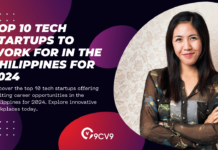
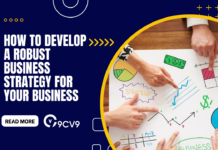
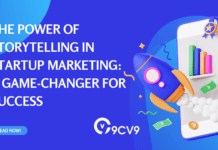





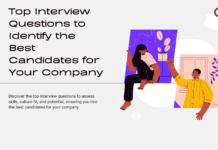
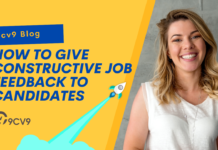

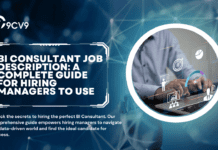





![Writing A Good CV [6 Tips To Improve Your CV] 6 Tips To Improve Your CV](https://blog.9cv9.com/wp-content/uploads/2020/06/2020-06-02-2-100x70.png)


